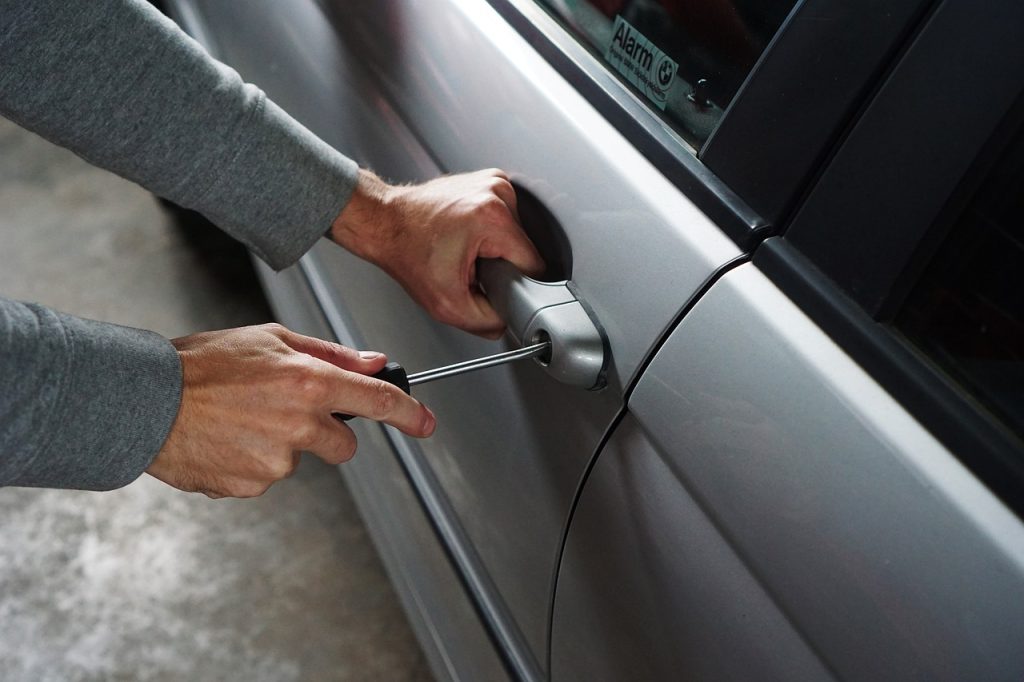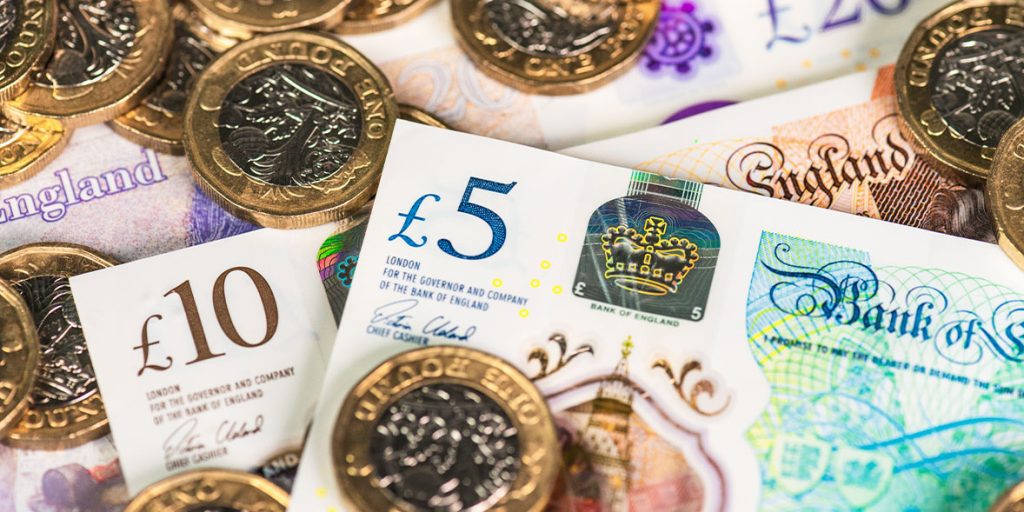If you’re a newly qualified or young driver, you’re more likely to encounter high car insurance costs. Insurers tend to charge high premiums for young drivers—aged between 17 and 25 years—than more experienced drivers. This is because younger drivers are at the highest risk on the roads and are more likely to make a claim. It’s not all bad, though. If you’re nifty and use the tips in our young driver insurance guide, you might be able to save some money!
Our guide will cover what young driver insurance entails, the types of policies you might be looking at and how your insurance is calculated. We’ve even included our top 10 tips for saving money on your insurance!
Young driver insurance
Just passed your practical test? If you’re looking to get out on the roads and flex your new skills, there’s one major thing you need to sort out first: insurance. It doesn’t matter if you’re only driving to your local shop, you need to be insured to drive. Fortunately, car insurance is pretty easy to sort out nowadays—at least, if you know how to navigate around what’s on offer. If you’re 17-25 years old, you’ll be looking at young driver insurance. Older than this age group? Then you’re looking at just plain old car insurance. Don’t worry, though; you can still use some of the tips in our young driver insurance guide!
What type of policy should I choose?

There are three main levels of cover to choose from:
– Third party: covers the costs for repairs or injuries for third parties affected by accidents caused by you.
– Third party, fire and theft: covers you for third party damages and theft/vandalism to your own car.
– Comprehensive: covers the above and for damages to your own car in the event of an accident.
As the minimum level of cover, you’d assume that third party cover would be your cheapest option. Interestingly, however, this isn’t always the case. In fact, some insurers will charge you more for third party cover than a comprehensive policy. That’s because, while third party was traditionally the cheapest cover, insurers soon clocked on to the fact that they were processing more claims from drivers with third-party policies—making third-party a policy with a higher risk attached.
It’s entirely up to you which type of insurance cover to go with. That being said, it’s always best to opt for a comprehensive policy. Doing so gives you peace of mind by letting you know you’re covered no matter the situation.
Why is young driver insurance so expensive?
It’s pretty simple, really. Young drivers are less experienced on the roads, and are statistically more likely to be involved in an accident than those over the age of 25. This labels young drivers as “high risk” for insurers, as they’re more likely to make a claim. Additionally, young drivers typically won’t have had a chance to build up a No Claims Bonus.
Of course, if this isn’t the first time you’ve had to sort out your insurance, you might have already built up a No Claims Bonus—meaning you’ll be looking at much lower premiums. Age is only one of many factors used by insurers to calculate the cost of your insurance. In the next section, we’re going to look at exactly what the insurer will be weighing up when deciding on your premium.
How is it calculated?

Age
As we’ve said, young drivers—aged 17-25—are labelled “high risk” to insurers. With their lack of experience on the roads, they won’t have had much time to build up a No Claims Bonus. Due to this, they’re more likely to be involved in an accident and need to make a claim.
Insurers aren’t in the business of losing money, which is why they’ll hit young drivers with higher premiums than other age groups. If this isn’t your first rodeo, however, and you’ve already been driving on the roads for a while, your experience might help you decrease your premiums—as long as you haven’t made any claims along the way.
Occupation
Believe it or not, your job can affect your insurance premiums. Some occupations will revolve around you being on the road more, e.g., a salesperson might have to travel on the motorways on a daily basis—increasing their chances of being involved in an accident.
Additionally, those who have to transport expensive equipment with them may need to make larger claims, with the knock-on effect of being deemed higher risk by insurers. In comparison, those that work at home or only have to commute to an office 15 minutes away from their home are more likely to see lower premiums.
What if I’m unemployed? If you don’t have a job, you’re looking at a pretty big hike in premiums. If you’re a homemaker, housewife or househusband, however, it should cut the cost. Please be aware that you should only put down that you’re a homemaker if you’re not looking for work. If you are looking for work, you need to state that you’re unemployed.
Location

According to Compare The Market, “ 90% of all car insurance claims occur within five miles of the driver’s home.” As you can imagine, this makes location a pretty important factor for insurers when determining a driver’s premium. If, for example, you’re located in a city centre that suffers from heavy traffic or a high number of accidents annually, your insurance will be much more expensive than it would be for someone who’s located in a quieter area. Insurers will specifically look at factors like:
– How many claims are made in your area
– The number of uninsured drivers
– How many fraudulent claims have been made
– What theft and vandalism rates are like
What address should I use if I’m a student? The address you put down on your insurance forms needs to be the place where you’ll be keeping your car for the majority of your time. If you’re using your car for your stay at university accommodation, then you should be using that address. Decided to keep your car at home while at university? You can keep your insurance going and let your insurer know you won’t be using it as much. However, this will still cost you. If you’re not going to be using it at all, you can register your car as off the road. In this case, you’ll need to apply for a Statutory Off Road Notification (SORN). Once you’ve done so, you won’t be able to drive or park your car on a public road. Not made up your mind yet? Our handy guide on taking your car to university might help.
Your car
Insurance providers will also be looking at your car when they’re calculating the cost of your insurance. They’ll specifically be looking at the following factors:
– The value of your car: as you’d imagine, the more expensive your car is, the most costly it can be to replace or repair—especially if the parts are particularly rare.
– Performance: if your car has a big engine, it means more speed and power—increasing the likelihood of you being involved in a serious accident.
– Car modifications: before you start pimping your ride, you should bear in mind that certain performance or aesthetics-based modifications can increase your insurance.
– Your usage: if you’re going to be using your car every day and coming in with a high annual mileage, you’re at a higher risk of being involved in an accident—further increasing your premium.
Cars are grouped by insurers into categories starting from 1 and finishing with 50. Cars that belong to group 1 are the cheapest to insure, whilst those in 50 will cost you an arm and a leg to insure.
Security

Insurers want to know that you’ve done your utmost to ensure that your vehicle is safe and secure. That way, you’ll be less likely to have to make a claim regarding theft or vandalism. Some insurers, for example, are more likely to lower premiums for drivers who park their car in a garage or on a driveway, rather than on the street. Additionally, insurers tend to lower premiums for drivers who have extra security measures in place, such as top of the line alarm systems and immobilisers.
Your driving history
Is this your first time sorting out insurance? This section won’t really apply to you, as you won’t have a driving history for insurers to look at. If, however, you’ve been driving for a while, your driving and claims history will have a big impact on your premiums.
If you’ve had to make a claim in the past due to an accident or your car being stolen/vandalised, then you’ll be less likely to get a cheap insurance deal. Similarly, if you’ve committed driving offences in the past, you’ll also be looking at higher premiums. Some insurers even increase premiums if you’ve attended a speed awareness course. On the other hand, if you haven’t made any claims for more than a year, you’ll have accumulated a nice No Claims Bonus.
Policy type
Obviously, the type of policy you choose will also affect the cost of your insurance. As we’ve said, it’s not always the case that the lower level of cover will give you the cheapest deal. In most cases, comprehensive cover will be the cheapest option for you.
Excess
Excess is the amount of money that you agree to pay in the event of a claim. The higher your voluntary excess, the less your insurance will cost. This is because you’re taking on a bigger risk. If you end up making a claim, therefore, your insurer won’t have to pay out as much. If you’re not looking to take such a risk, you can opt for a lower excess so that your insurer will have to pay more in the event of a claim. This, of course, will mean a higher premium for you.
Buying young driver insurance
There are hundreds of insurers out there all vying for your attention. As a result, it can be overwhelming to try and sift through everything on offer. Even if it’s not the first time you’ve had to sort out your insurance, there’s still a lot you need to consider. The easiest way, by far, to find the cheapest young driver insurance deal is to use comparison sites—they’ll do most of the legwork for you. All you’ve got to do is give them your details and they’ll then use these details to get the cheapest quotes from insurers.
When you’re sending off for quotes, you’ll be asked to provide the following information:
– Your occupation
– Your registration plate
– Car modifications
– Annual mileage
– Licence type
– Past claims, points or accidents
– Additional drivers
Other information you might need to provide includes how you intend to use your car, e.g., for social purposes, social and commuting, or social, commuting and for business. You’ll also be asked where you intend to keep your car during the day/night. It’s important that you tell the truth to your insurer—even the tiniest white lie can catch you out!
10 Tips for Saving Money on Insurance

1. Add a second or third driver
As a young driver, you’re labelled “high risk” to insurers. You can lessen the risk and cost, however, if you add a more experienced, lower risk second/third driver to your policy. Obviously, this will only really help you if the other driver(s) has a good driving record. Bear in mind that the cost may vary depending on the insurer—some might lower your premiums with these drivers, while others may actually increase it.
Your best bet is to play around—come up with a few potential other drivers you could add to your policy. Then, see how adding them would alter your premium compared to the cost of you shouldering it alone.
Tempted to add someone as a main driver so you don’t have to pay as much for your insurance? If they’re not driving the car for the majority of the time, this is called fronting, which is illegal.
2. Tweak your job title
As we’ve mentioned, your occupation can have a big impact on the cost of your insurance. Fortunately, this is something that you have a bit of power over. There are hundreds of job titles to choose from, and many tend to overlap. As such, you should take some time to mess around with your job title—your role might fall under a few different titles, one of which might cut down your costs. For example, a “journalist” might be looking at higher premiums than an “editor”, when, for all intents and purposes, they’re doing a similar job.
Choose a telematics policy
If you consider yourself to be a good driver, you’re in luck—you can actually get rewarded for being a safe driver with lower premiums. How? A black box (telematics) policy. Depending on how well you drive, you could see your insurance premiums rise or fall. By fitting a black box to your car, your insurer will be able to monitor real-time data and assess just how safely you drive. The following factors will be assessed:
– Braking reactions: Whether you brake harshly/suddenly, or gently and in due time
– Your speed: Whether you stick to the limit or start veering into dangerous driving
– Acceleration habits: Whether you accelerate suddenly or gently
You’ll need to make sure you read the fine print, as some policies will vary with what they measure. Some insurers have strict curfews in place, so you’ll get a fine or an increase in premiums if you drive at a time you’re not supposed to.
4. Pay a higher excess
As mentioned earlier, you can get a reduced insurance premium if you decide to pay a higher excess. The only issue here, however, is the risk involved. Remember—the higher you go, the less your insurer will have to pay in the event of a claim. Try to pick a sensible number, so that you know you’ll be able to afford it in a worst-case scenario.
5. Pay annually
Instead of paying your insurance monthly, you should look into paying it per year instead. Yep, we know—the costs look staggering when you compare paying monthly vs annually. However, it’s almost always cheaper to pay for the year than by monthly instalments. It’s beneficial for the insurer, as they don’t have to process monthly payments—and it tells them that you won’t be looking to switch insurer any time soon.
Once you’ve got a few possible insurers in mind, take your time to calculate how much it would cost you to pay for the entire year on a monthly basis compared to a one-off payment. If you can afford to do so, paying for the year will work out cheaper.
6. Choose the right car
If you’ve already got a car and you’re looking for insurance, there’s not much you can do. Expensive cars with big engines, for example, will mean paying pretty extortionate premiums—after all, more power and speed usually means higher costs for repairs and so on. These types of cars are also at a higher risk of theft. This is why so many young drivers opt for smaller cars.
7. Up your security
Regardless of what category group your car belongs to, you can lessen your premiums by increasing your security. Thatcham is an independent group that rates the different types of car alarms and immobilisers on the market to help insurance companies factor security into their price calculations. They have seven categories for security—the closer you get to 1, the more secure your car is. This means that it’s less likely to be stolen—reducing the risk of you making a claim on your insurance.
1: electronic alarm and immobiliser
2: electronic immobiliser
2/1: electronic alarm upgrade
3: mechanical immobiliser
4: wheel locks
5: post-theft tracking & recovery systems
6: stolen vehicle tracking
7: stolen vehicle location
Q class systems: non-categorised aftermarket security upgrades
If you can, we’d definitely suggest looking into a category 1 or 2 security system. Not only will it help decrease your premiums, it will also give you peace of mind.
8. Look elsewhere when your time’s up
Once your year is up with your insurer, you might find yourself automatically renewing your policy. After all, isn’t it just simpler to stick with the same insurer? Whilst it might save you the trouble of having to look for a new insurer, it will, in almost all cases, cost you more money. Insurers offer much cheaper deals for young drivers the first time around. When you auto-renew, however, the odds are that they’ll increase the price. Yep, that’s right—loyalty doesn’t always pay off!
Instead of auto-renewing, you should start looking for a new insurer to get the best deal possible.
9. Drive safely
One of the ways you’ll decrease the cost of your insurance is by building up a No Claims Bonus and proving to insurers that you’re a low risk driver. The only real way to do this is to drive safely—be conscious of how you accelerate and brake, for example. If you end up with no accidents, claims or points on your licence by the end of the year, you can reduce your premiums significantly.
10. Look into multi-car cover
If your household has more than one car, you might want to consider multi-car cover. With some insurers, you might end up with a much cheaper deal than you would if you paid for separate insurance policies. Of course, as with everything else with insurance it could also turn out to be more expensive. As such, you should shop around—see how much a multi-car cover would cost and compare it to individual policy costs.
Tempted to skew the truth a little on your insurance? Whether you’re telling your insurer that someone else is the main driver when they’re not or avoiding disclosing any of your latest car modifications, it could lead to your insurance being invalidated.
